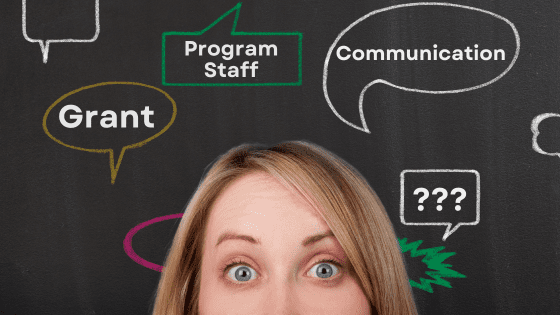In the world of nonprofit organizations, where resources are always stretched thin and the competition for funding is fierce, the ability to secure grants can often be the difference between expanding vital services or making painful cuts to a much-needed program. This is where the strategic framework of a logic model becomes an indispensable tool. By clearly outlining how your programs lead to desired outcomes, a logic model not only sharpens your organization’s focus but also significantly improves your grant proposals. This article delves into the essence of logic models, what they are composed of, and how they enhance the grant writing and submission process.
Understanding Logic Models
At its core, a logic model is a visual representation that links the outcomes you aim to achieve with the resources at your disposal and the actions you plan to take to tie them together. Think of it as a roadmap that guides you from where you are now (resources) to where you want to be (outcomes and impact), detailing the routes (activities) you’ll take and the landmarks (outputs) you’ll take pictures of along the way. If that analogy is too much of a stretch, here is a more in-depth look at what a logic model is composed of.
The Anatomy of a Logic Model
To harness the full power of a logic model, it’s crucial to understand its components:
- Inputs: These are the resources required to run your program, such as staff, volunteers, equipment, and funding. Inputs are the foundational blocks that fuel the engine of your project.
- Activities: Activities are the actions or processes your program undertakes with the resources available. This can include workshops, outreach programs, and any other initiatives designed to achieve your goals.
- Outputs: Outputs are the direct products of your program’s activities. They are the quantifiable services delivered or products produced. Examples include the number of workshops conducted or educational materials distributed.
- Outcomes: Outcomes represent the changes or benefits that result from your program. They can be short-term (changes in knowledge, attitudes, skills), medium-term (changes in behavior, practices), or long-term (changes in condition, status, or well-being).
- Impact: The impact is the ultimate change or benefit that occurs as a result of your program, often at the community or societal level. It’s the long-term effect and the reason your program exists.
Logic Models in Grant Writing: A Strategic Edge
Imagine the journey of a nonprofit eager to make a difference in their community through an innovative program designed to improve literacy rates among children. At the heart of their mission lies a vision to open the world of books to every child, transforming futures one word at a time. However, to turn this vision into reality, they need funding—a common challenge that nearly everyone can relate to. This is where the story of their strategic edge unfolds, thanks to a well-constructed logic model.
As they embark on the grant-writing process, the team meticulously crafts a logic model that does more than just list their activities in the community; it paints a vivid picture of their journey from resources to impact, with each component interlocking to form a tight-knit argument explaining why they should receive funding.
First, the logic model states their program’s goals. It then lays out a roadmap that demonstrates how their inputs, such as volunteer tutors and donated books, will lead to a series of literacy workshops and reading sessions—their key activities. This cause-and-effect layout demonstrates the feasibility and necessity of their project, making it a compelling argument for anyone who glimpses their vision to give them the funding they need.
A crucial criterion in this process is making certain the nonprofit’s logic model aligns seamlessly with the objectives of potential funders. By mapping out their strategy, the nonprofit demonstrates how their goals dovetail with the priorities of their funders. This alignment is a thoughtful process of tuning their model to resonate with the values and outcomes funders wish to support. Just as a person would tailor their cover letter to a specific company’s needs in a job application, the logic model presented should demonstrate why the funder benefits from forming a partnership.
Perhaps the most critical point of the logic model is its ability to detail the impact of their program. It connects the dots between activities and the meaningful, measurable changes they aim to achieve in children’s literacy. This narrative is compelling to funders, who seek to invest in programs with a clear, well-thought-out trajectory toward success. It’s a promise of transformation, supported by a logical framework that outlines a journey from effort to outcome.
Lastly, the model underscores their commitment to evaluation. It highlights not just what they plan to achieve but how they will measure success, showcasing a thoughtful approach to learning and improvement. This aspect reassures funders that their investment is not only in a program aiming for high impact but also in one that values feedback and growth.
Through the narrative of their logic model, the nonprofit tells a story that is both strategic and heartfelt. It’s a tale of how a simple chart can bring clarity, alignment, evidence of impact, and a commitment to evaluation. This version of a narrative sets their proposal apart, offering a strategic edge in the competitive realm of grant writing, all while staying true to their mission of bringing literacy within reach of every child.
Crafting Your Logic Model
Creating a logic model for your grant proposal doesn’t have to be a daunting task. Start by gathering your team to brainstorm and outline your program’s components. The first step in understanding your impact lies first in identifying the problem you are trying to solve, not the activities you’re performing every day. After that, be as specific as possible in describing your inputs, activities, outputs, outcomes, and impact. Remember, your logic model should tell a compelling story about how your program makes a difference.
Best Practices for Incorporating Logic Models into Grant Proposals:
- Customize for Each Grant: While the core elements of your program may remain consistent, tailor your logic model to reflect the priorities and interests of each funder. Keep an original copy on hand that you can adjust for each individual opportunity.
- Be Realistic: Ensure that the outcomes and impact you propose are achievable with the resources and time you have. Overpromising can undermine your credibility.
- Use Clear, Concise Language: Avoid jargon and overly technical terms. Your logic model should be understandable to someone outside your field.
- Visual Appeal: Aesthetics matter. Ensure your logic model is not only informative but also visually engaging. This can make your proposal more memorable.
- Support with Data: Whenever possible, support your logic model with data or evidence that underscores the need for your program and the likelihood of its success.
In the competitive realm of grant funding, a well-crafted logic model is more than just a part of your application. By clearly articulating how your program leads to meaningful outcomes, logic models not only strengthen your proposals but also enhance your program’s implementation and evaluation toolset. As you embark on your next grant application, remember that a logic model is not just a requirement to be checked off but a light to illuminate the path to achieving your mission. Let it guide you and your potential funders towards a shared vision of success.





